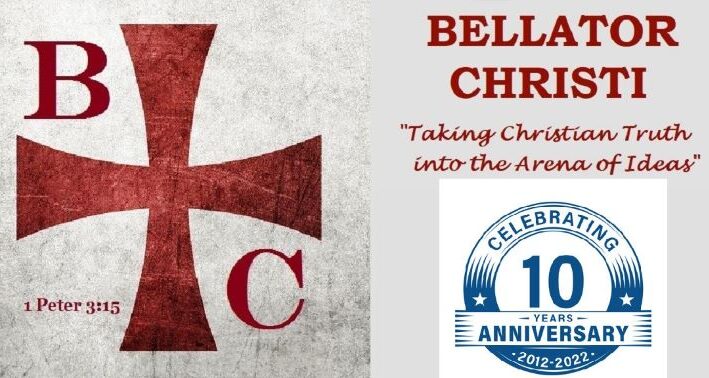The Gospel of John opens with these words: “In the beginning was the Word, and the Word was with God, and the Word was God. He was in the beginning with God. All things were made through him, and without him was not any thing made that was made…And the Word became flesh and dwelt among us, and we have seen his glory, glory as of the only Son from the Father, full of grace and truth” (John 1:1-3, 14).[1] Incomprehensible! Often at Christmas time, we are lost in the imagery of a baby, wrapped in swaddling clothes, lying in a manger. One may picture angels overhead with Mary and Joseph seated near the Child, surrounding by shepherds, wisemen,[2] and onlooking animals. But does one contemplate the great complexity of it all? John notes that the eternal Word, the Logos,[3] came to earth and became a human being. God became one of us. How does one understand this complex doctrine? Early in Christian history, two schools sought to develop and understanding on how it was that God came to earth. One developed in Alexandria, Egypt, a center of high intellectualism and which housed one of the largest libraries in human history—known as the Alexandrian school. Another developed in Antioch located in Asia Minor (around modern Turkey)—known as the Antiochene school.
The Alexandrian School of Understanding
The Alexandrian school was home to some powerful Christian thinkers including the great apologist Justin Martyr. Athanasius, the man who defeated the ancient Arian heresy,[4] came from this school of thought as well as Cyril of Alexandria and others. The Alexandrian school “focused sharply on the significance of Christ as savior.”[5] As such, the Alexandrian school focused on the divine nature of Christ and emphasized the divine Logos as He assumed a human nature. Cyril of Alexandria notes,
“In declaring that the Word was made to ‘be incarnate’ and ‘made human,’ we do not assert that there was any change in the nature of the Word when it became flesh, or that it was transformed into an entire human being, consisting of soul and body; but we say that the Word, in an indescribable and inconceivable manner, united personally to himself flesh endowed with a rational soul, and thus became a human being and was called the Son of man. And this was not by a mere act of the will or favor, nor simply adopting a role or taking to himself a person.”[6]
Apollinarius of Laodicea (c. 310-390) took the Alexandrian understanding of the Logos assuming flesh to the point where he claimed that a human mind and soul were replaced with a divine mind and soul. The Apollinarian school thus devalued the human aspect of Christ, a concept that would be challenged by many Alexandrians and especially the Antiochenes.
The Antiochene School of Understanding
Whereas the Alexandrians focused on the salvific aspect of Christ, the Antiochene school focused on the moral aspects of Christ.[7] The Antiochene school focused on the wholeness of Christ being both divine and human. Unfortunately, like Apollinarius would for the Alexandrian school, a man name Nestorius (c. 386-451) would stretch the Antiochene understanding to the limits of heresy. Nestorius would argue that Christ held two natures: one human and one divine. Yet, Nestorius’ view led to the belief that Christ has two parts to Himself. However, a solution to this enigma would come from the Antiochene school.
The Hypostatic Union
The Antiochene school found a solution to the two natures of Christ in the term “hypostatic union.” That is, the union of the “divine and human natures in Christ—rests in the will of God.”[8] As Theodore of Mopsuestia would denote,
“The distinction between the natures does not annul the exact conjunction, nor does the exact conjunction destroy the distinction between the natures, but the natures remain in their respective existence while separated, and the conjunction remains intact because the one who was assumed is united in honor and glory with the one who assumed, according to the will of the one who assumed him…In this same way here [i.e., in the incarnation] they are two by nature and one by conjunction because the adoration offered to the one who has been assumed is not divided from that offered to the one who assumed him.”[9]
Thus, the solution is found by acknowledging that Christ was both divine and human, compiled into one person—Jesus of Nazareth. The Word became flesh. Therefore, one finds both the divine Word and a human persona in one being.
Conclusion
What mystery! What wonder! The babe lying in a manger was none other than God Himself! God joined the human drama. He became one of us so that He could point us back to Him. I read a story of a farmer who returned from his children’s Christmas program. He could not understand why God came to earth, or even why He would desire to do so. After he tucked his kids in bed, he checked on his animals in the barn on this cold, snowy night. Clomping through the snow and opening the doors to the barn, he heard faint chirping. He looked to find four little birds flopping in the snow. They could not yet fly and the cold snow was freezing them.
The farmer grabbed a broom, sweeping them towards the barn. The more he swept, the more frightened the little birds became. He tried to coax them inside with his voice, yet they could not comprehend his wisdom. He attempted to scoop them in his hands, only to find that the birds would flop back out. The birds were inches away from safety. The barn’s warmth would provide them shelter and warmth for the winter. Then the thought penetrated his mind, leaving him breathless with the insight of the incarnation for which he had long been longing: if he could become one of the birds, he could fix the broken relationship the birds had with the farmer. He could tell them that the farmer meant them no harm. He could lead the birds to safety, saving their lives—if only he could become a bird.
God did just that for all humanity. He lived among us, so that we could live with Him. He would eventually suffer for us, so that we could rejoice. He would die, so that we could live. What mystery! What amazing mystery! And what amazing love!
© December 12, 2016. Brian Chilton.
Notes:
[1] Unless otherwise noted, all quoted Scripture comes from the English Standard Version (Wheaton: Crossway, 2001, 2011).
[2] This is an erroneous depiction as the wise men did not appear at the time of Christ’s birth, but rather appeared a few months to a couple of years after the birth of Christ.
[3] The Greek term translated “Word.” The Logos is a complex concept as it depicts the personification of divine wisdom. It was understood as the aspect of God that developed the universe.
[4] Arianism is comparable to the modern Jehovah Witness movement as it denied the divine nature of Christ.
[5] Alister E. McGrath, Christian Theology: An Introduction, 5th ed (West Sussex, UK: Wiley-Blackwell, 2011), 277.
[6] Cyril of Alexandria, Second Letter to Nestorious IV, 3-5.
[7] See McGrath, 278.
[8] McGrath, 279.
[9] Theodore of Mopsuestia, “Catechetical Homily,” 8.13-14, Woodbrooke Studies: Christian Documents in Syriac, Arabic, and Garshuni, Alphose Mingana, trans (Cambridge, UK: Heffer, 1933), 89-90.






[…] “In the beginning was the Word, and the Word was with God, and the Word was God. He was in the beginning with God. All things were made through him, and without him was not any thing made that was made…And the Word became flesh and dwelt among us, and we have seen his glory, glory as of the only Son from the Father, full of grace and truth” (John 1:1-3, 14).[1] […]
Thanks for sharing!
Good post. I was just reading up on the two different school on Christology earlier this morning! Timely!
That’s great! Hope you have a blessed Christmas.
BC
Reblogged this on Talmidimblogging.
Thanks for sharing!
You’re very welcome my friend 😎